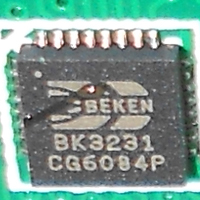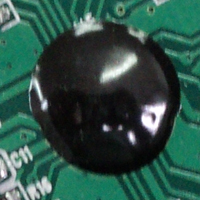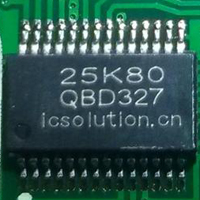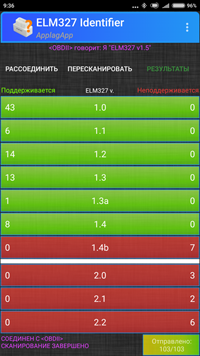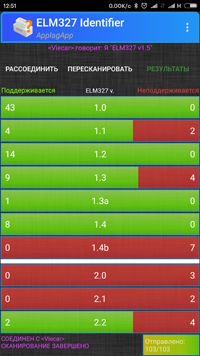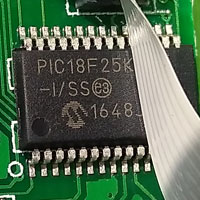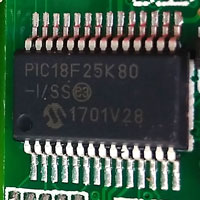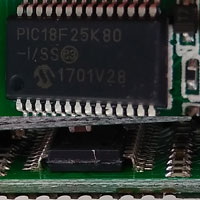We would like to give information about adapters in general and the products offered in particular.
From the History of Adapters
The ELM 327 microcircuit, which converts the OBD-II protocols of car systems into the RS-232 protocol for communication with a computer, was launched in 2005 by the Canadian company ELM Electronics, which is the manufacturer of ELM327 at the moment.
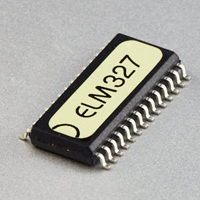 It is an integrated circuit based on the 8-bit Microchip PIC18F2480 controller with the original firmware from ELM. By the way, “327” is the designation of the most universal version in the “32x” family of schemes that supports the maximum number of protocols – SAE J1850-PWM / VPW, ISO 9141-2 (K-Line), ISO 14230-4 (KWP), ISO 15765 -4 (CAN), SAE J2411, SAE J1939. The cost of only the original Canadian chip today is $ 15-20, the cost of a “pure” controller is from $2
It is an integrated circuit based on the 8-bit Microchip PIC18F2480 controller with the original firmware from ELM. By the way, “327” is the designation of the most universal version in the “32x” family of schemes that supports the maximum number of protocols – SAE J1850-PWM / VPW, ISO 9141-2 (K-Line), ISO 14230-4 (KWP), ISO 15765 -4 (CAN), SAE J2411, SAE J1939. The cost of only the original Canadian chip today is $ 15-20, the cost of a “pure” controller is from $2
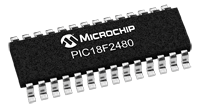 The market immediately appreciated the prospects of this solution, and by 2007, the first, more or less workable, ELM327 clones from Chinese manufacturers appeared. In 2010, the firmware they copied from the current original version v1.4b at that time received the designation v1.5 (ELM Electronics did not have such a version). It is the successful full-featured clones of this generation that made “ELM327” synonymous with a mass diagnostic adapter, affordable and reliable in operation. In the same year, Microchip offered a new, slightly more advanced and, cheaper alternative to the original chip – the PIC18F25K80 controller, which to this day remains the basis for the “correct” v1.5 adapters (original Canadian circuits still use -2480).
The market immediately appreciated the prospects of this solution, and by 2007, the first, more or less workable, ELM327 clones from Chinese manufacturers appeared. In 2010, the firmware they copied from the current original version v1.4b at that time received the designation v1.5 (ELM Electronics did not have such a version). It is the successful full-featured clones of this generation that made “ELM327” synonymous with a mass diagnostic adapter, affordable and reliable in operation. In the same year, Microchip offered a new, slightly more advanced and, cheaper alternative to the original chip – the PIC18F25K80 controller, which to this day remains the basis for the “correct” v1.5 adapters (original Canadian circuits still use -2480).
Unfortunately, closer to the mid-2010s, some Chinese manufacturers started to create adapters “based on” ELM 327 on a different element base. Moreover, using both dubious solutions, and even more advanced than the original (on STM8 / 32). New controllers required firmware modifications, so an “optimized” universal version v2.1 was created in China (which has nothing to do with the Canadian product of the same name).
The main drawback of most of these adapters is the reduced functionality and loss of versatility, which causes problems when diagnosing through elm327, and one of the latest trends is that the elm 327 is not connected. As a rule, in such adapters at the physical layer there is no support for the J1850 protocol, at least the work on the ISO 14230 and ISO 9141 protocols is degraded, not to mention the original protocols of the automakers. Due to inadequate processing of standard commands, errors occur during communication with the modules, so that only the connection to the engine control unit is guaranteed. There may be no command processing for individual programming of adapter parameters. Many of these adapters are not suitable for work with cars produced in the early 2000s and cannot interact with specialized diagnostic programs. At the same time, on modern cars, when connected via CAN and diagnostics using standard OBD2 protocols, they show themselves quite adequately, but even so, Chinese suppliers strongly recommend using only the most popular universal programs (applications) with them.
In some cases, the capabilities of both the full version v 2.1 and various intermediate solutions are sufficient to view the main parameters and reset errors. There are also a few “correct” v2.1 that support communication via CAN and K-line, work with third-party programs and other necessary options … However, version v 1.5 is obviously full, fully functional and universal. A necessary (but not always sufficient) condition for its presence is the performance of an adapter based on the original Microchip PIC18F25K80 controller.
When communicating with a computer, the adapter reports its firmware version, but due to massive complaints from users, manufacturers began to mask “unsuccessful” versions, replacing the response when polling. In addition, a lot of adapters have appeared with some homemade firmware that do not fully correspond to any of the main versions and do not support some standard AT commands even of the early ELM327. You can quickly and visually check a specific adapter, for example, using the popular ELM Identifier application. When connected to the adapter, the MotorData OBD program also determines its real version by passing or not passing specific commands.
What happens?
But why did seemingly proven solutions start to fail? Alexander Lazarev, an expert and software developer for automotive diagnostics, will tell you about this:
“The CAN periphery of most Chinese clones is very flawed. The module configuration commands are related to the long-distance commands and are not supported by cheap analogs of the original chip. As a result, the transmit-receive capabilities on such devices are sharply limited. Such adapters can not pull the constantly expanding capabilities of the original protocols of automakers, the development vector of which is shifting from sequential polling to tabular (one request all parameters). Thus, the polling speed increases tenfold. A necessary condition for this, of course, is the ability to broadcast large data arrays. , when sequentially polled using standard OBD2 protocols, they show themselves quite adequately. But because of the receiving buffer, the size of which varies on different firmwares, anomalies such as an incomplete VIN number or an incomplete list of fault codes may be observed.
The issue of noise should be considered separately. Interference by itself is not terrible if it comes at the beginning or end and does not violate the integrity of the message. Diagnostic applications can and should cut them off. Another effect is the interference inside messages, which is also an indispensable attribute of a cheap Chinese copy of the adapter. Here, the reliability of the output data is called into question. The formula is simple – the cheaper the adapter, the stronger the noise. By the way, the UART receiver frame errors, which are typical for the K-Line group protocols (ISO 9141 and ISO 14230), have the same effect. The next bytes float on the previous ones, eating up the middle of the message. How such an error is handled depends on the application. But if the next byte completely overlapped the previous one, then it will not even be possible to restore the integrity even partially. The entire message becomes invalid. Many have probably noticed that the adapter starts to malfunction with heating, after 10-15 minutes of work. Either “sneezes”, or does not return data, or stops the exchange altogether. All this happens due to errors in the firmware. Microcontroller hardware modules stop working until the error flag in their command register is cleared.
In general, the number of errors has increased lately and the trend continues. The nature of the mistakes became frankly shameless. The oscillograms show that the timings are not set according to the protocol, due to which the process of waking up the control units has also become a lottery. There is a connection to one car, not to the other. The protocols are the same, the adapter is the same. It so happens that connecting to another car with a different protocol can “hang” the adapter, as they say, until better times. They let a friend connect – and they got a faulty box back. Here is the point. The settings for the last selected protocol are stored in non-volatile memory. The protocol is changed according to the following algorithm: if the index of the new protocol is higher than the previous one, then the settings in memory are changed and the new protocol is turned on correctly, if the index of the previous one is higher or equal to the index of the new one, then some kind of overlap occurs. The protocol switches but doesn’t work. The ATZ command does not reset the device to the “factory” settings. It was programmed to answer correctly, but forgot to program to reset. The question arises – what is the probability that all commands that pass the test in the ELM Identifier application perform the functions assigned to them? “
Our Advantages
The Legion-Autodata company has been selling diagnostic adapters since the early 2010s, but at a certain point this work had to be suspended – precisely because of the unstable quality of the products of contractors who were massively engaged in experiments with controllers and firmware. Now there is an opportunity to establish work with reliable Chinese partners at a higher level, achieving stable quality and required product characteristics, and not forgetting about control.

It would seem that in the local market today there are enough offers of diagnostic adapters of very different prices and quality, not to mention the possibility of ordering in Chinese online stores. So what are the advantages of our proposals?
• Warranty. In recent years, ordering adapters from China has turned into a real lottery, even the largest trusted sites, instead of those stated in the description of v1.5 on the PIC18F, send crafts with other chips and dubious firmware.
We initially negotiate the characteristics of the goods with partners, and then personally check all newly arriving lots (at least through the ELM Identifier application), after which we can guarantee full compliance of the proposed adapters with elm327 with firmware v1.5. In addition, we selectively open some adapters to check their electronic content (correct chip).
• Timing. In our experience, shipping the adapter from China by registered mail now takes almost a month, a significant part of which is spent on primary processing, export-import and customs procedures. With a certain probability, you can add another week to them for a dispute with the seller, and the second month of waiting for another elm 327 adapter for a more correct version, with the accompanying development of many new stable concepts like “fake track”, “60 days export is the norm”, “khorgos”, “Rostov sorting”, etc.
Our adapters are available from our warehouse in the metropolitan area within 24 hours. When sending within the country, the terms depend only on the work of the Russian Post, however, you can count on receiving the parcel within one to two weeks.
• Quality. Those who are closely interested in the topic of diagnostic adapters, even from photographs, could notice that we preferred branded products of a higher level compared to common and budget noname-options – in order to achieve stable quality. In addition, Legion-Autodata is a developer of software for diagnosing vehicles using ELM327 adapters, so we are more than anyone interested in the offered devices having full functionality and supporting work with various programs and diagnostic applications.
• Support. Legion-Autodata has been working in the field of car maintenance and repair for more than two decades, has been engaged in diagnostic software for more than ten years, at least five years has been working with ELM327 adapters. We know the main market trends, possible problems, expectations and wishes of users. We do not just sell a product to our customers, but we can also provide professional answers to questions about its application.
Production
In our online store you can buy a line of adapters for car diagnostics: ELM327 Bluetooth – small (S), medium (M) and large (L) format, as well as a large format adapter with Wi-Fi. All of them are based on the original PIC18F25K80 chip and fully comply with the v1.5 specification. We also tested their practical performance both on relatively modern cars and on Japanese models of the early 2000s with K-line diagnostics (using the elm327 Motordata OBD program).
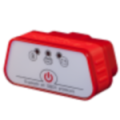
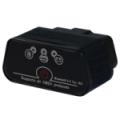
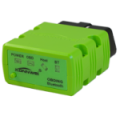
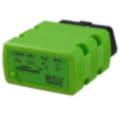
Since customers were also interested in compact size Wi-Fi adapters, we added two more items. However, please, note that these devices are based on another chip – STMicroelectronics STM32F042K6T6 ARM-architecture, have their own firmware and command processing logic, therefore ELM Identifier is defined in its own way in the ELM Identifier application. We have tested the performance of these adapters when connected via the ISO 15765 (CAN) protocol and diagnosed using the standard OBD protocols.
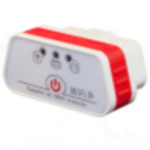
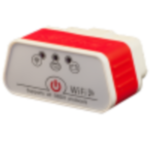
In conclusion – a few comments on which elm327 adapter is better to choose in a particular case.
Bluetooth or Wi-Fi?
– Versions with Bluetooth are suitable for working with the absolute majority of Android devices and Windows laptops with Bluetooth module.
– Versions with Wi-Fi are more universal, allowing you to use the adapter with iOS devices (iPad, iPhone) and with some computers / tablets that do not have a Bluetooth module.
– The variety of third-party diagnostic applications for Bluetooth versions may be slightly larger, however, all top programs provide for work in any of these ways.
– Performance in this case is primarily determined by the speed of data exchange between the adapter and the vehicle’s control unit, which is obviously lower than the speed of wireless connections.
– In some cases, the longer range of the Wi-Fi connection may be important. – In most devices, when connected via Wi-Fi, mobile Internet access is disabled by default.

Larger or smaller?
The choice of the size (form factor) of the adapter depends mainly on the features of the location of the diagnostic connector in a particular car, while the functionality of the devices is the same. The shape of the adapter should ensure its convenient connection and easy removal; the adapter should not interfere with the driver while driving. So, for recessed connectors, the “high” ELM327 adapter is better suited, and for those protruding under the dashboard in the driver’s foot area – the most compact Wi-Fi or Bluetooth Mini.
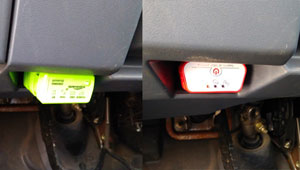
We hope that the information in this article will help the car owner choose the best elm327 and put an end to the question of which elm327 to buy. How to connect elm327, you can find out by downloading the instruction in from our website.

